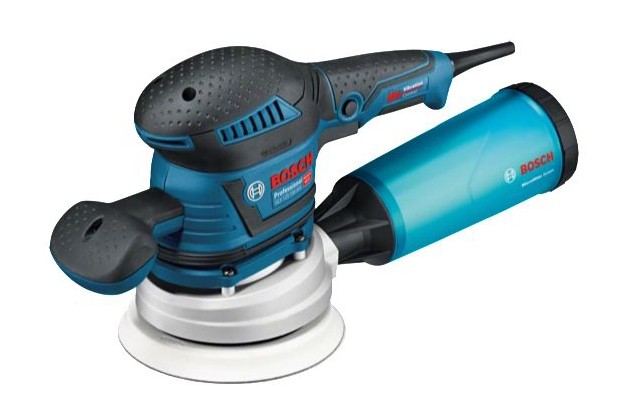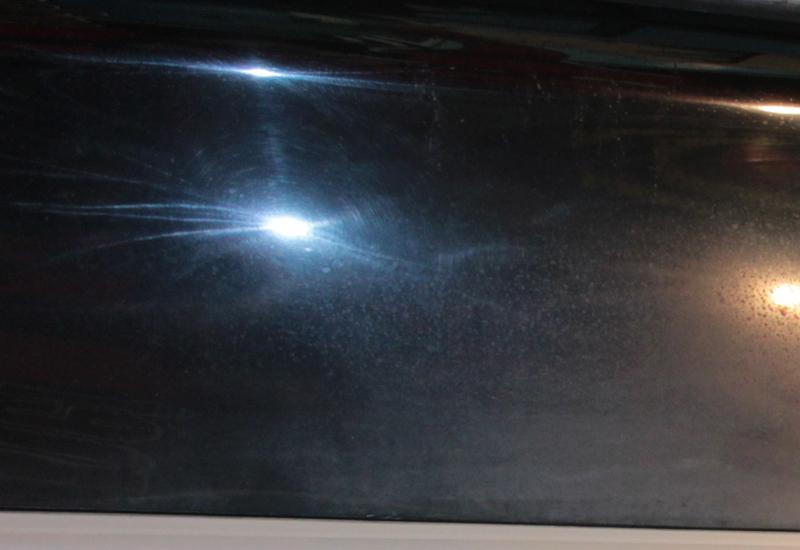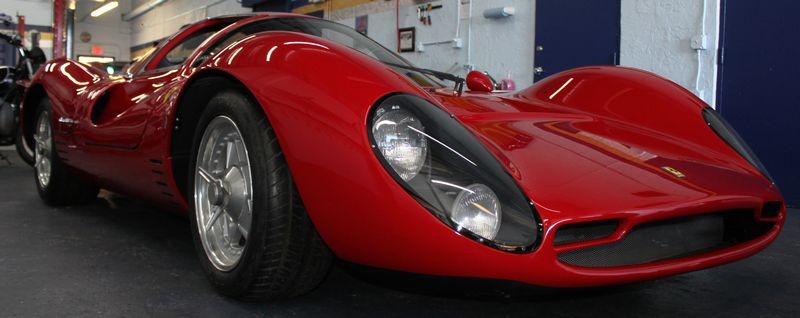Help! My first detail project, and its a 26ft boat!
Hello all! Dan here from NZ
This is my first post on the forum after reading numerous articles… Wow what a great resource you have here! I am about to (attempt to) start my first detailing project which will be the gelcoat of my recently acquired 2005 26ft Grady White boat. I will try to provide as much information as I can right up front.
View attachment 69316
Objective:
My main goal is to measure my thoughts against your collective experience. I need to balance my expectations and budget. I have done a lot of research but I am yet to pull the trigger on a polishing tool, pads and compounds. I do not have access to all the great stuff you have in America, so I will list some products that I can access here to help narrow this down.
Expectations:
I am never one to sell myself short, however I am not excepting the mirror like results you guys manage to get. If I achieve such results I will be blown away, but my primary goal is to obtain a good level of shine and protect my investment going forward.
Budget:
Without going too far down the rabbit hole, I would like to tackle this project for about half the price I would have to pay to have it done. I am time rich during this COVID 19 lockdown, but I have tightened up on my spending as a furloughed Airline Pilot (at least for the time being). I figure the job is about $1500 NZD (and that might be a gross error), so my budget is $750 NZD… About $450 USD
The boat:
She a 26ft Grady White that has been slipped in South Florida since 2005, before being imported to NZ 2 months ago. While the hull still shows some wax shine, the topsides visibly bare the aftermath of 15 years in the Florida sun. Unfortunately, down here in NZ we have very high UV levels so things will only get worse if not addressed! The boat will be dry stacked without a cover 4 levels up where I can’t get to her and exposed to the elements.
The photos I have added were tricky to take and may not properly convey the condition of the gel. The gel is oxidised to the point where it will leave a chalky residue on your fingers when rubbed. I have done some testing and it comes up pretty well after a couple of passes with 2000 grit wet (by hand), then compounded (by hand) and waxed. 2000 Grit is the finest grade paper I can readily get my hands on here in NZ. I am not sure how far I can wet sand/compound before I start cutting though the gel and so I feel that getting the gel to a stage where I can maintain it might be better than getting it back to new. How long is a piece of string, right?!
View attachment 69312
Wet sanded and compounded. Tape to assist focus
View attachment 69317
Oxidized gel
View attachment 69311
The shiny test area has been wet sanded, compounded and waxed all by hand
View attachment 69313
View attachment 69314
Tools:
I have used a Makita rotary buffer in the past and found it a little intimidating. I did not feel that I had great control, or much accuracy. I have a random orbit sander (Bosch Gex 125-150 AVE) however that bogs down and stops spinning with polishing pads. It is a sander with a limited 4mm throw, however I feel this demonstrates the limitations of the random orbital concept. I though a forced rotation DA might be the best compromise and can purchase a Makita PO5000C for NZ$390 (US$230). I have read Mike Phillips review and I feel this may be the best bang for my buck. I understand that the free spinning mode is weak, but the forced rotation mode is effective. I cannot justify over NZ$1000 for tools like the Rupes Mille for example. If anyone has experience, do you think the Makita would cut the oxide with the correct pad and compound? If wet sanding is the best starting point, could this tool buff out the 2000 grit scratches that seem to come out with 3M compound by hand?
Pads:
Lake Country, Rupes and Chemical Guys are the “best” pads I can readily find in NZ that you will have experience with. I am leaning towards Lake Country as there are numerous good reviews. These pads are double what you pay in the US (one orange 5.5 LC pad is about $14 USD here in NZ) so I want to buy the right pads, and the right number of pads (as best as I can). Do the LC pads play well with the Makita PO5000c? Can you recommend what colour pads for the gel (maybe in three steps… Oxide removal/polish/wax), and what pad/s I should use for the milky Isinglass?
Compounds:
Again, section is a little bit limited but the common ones you know like Chemical Guys, 3M, Menzerna, Meguiars etc are available. I have not seen any “Marine 31” products here in NZ. The available compounds are all about 2x the price as well. I currently have 16oz of 3M “Marine Compound and Finishing Material”. This stuff seems to dry out pretty quick but works ok when buffed by hand. Do I need to mist water when using it, or try a different product?
This is a long post so if you made it to the end, well done! Thanks in advance!!
Hello all! Dan here from NZ
This is my first post on the forum after reading numerous articles… Wow what a great resource you have here! I am about to (attempt to) start my first detailing project which will be the gelcoat of my recently acquired 2005 26ft Grady White boat. I will try to provide as much information as I can right up front.
View attachment 69316
Objective:
My main goal is to measure my thoughts against your collective experience. I need to balance my expectations and budget. I have done a lot of research but I am yet to pull the trigger on a polishing tool, pads and compounds. I do not have access to all the great stuff you have in America, so I will list some products that I can access here to help narrow this down.
Expectations:
I am never one to sell myself short, however I am not excepting the mirror like results you guys manage to get. If I achieve such results I will be blown away, but my primary goal is to obtain a good level of shine and protect my investment going forward.
Budget:
Without going too far down the rabbit hole, I would like to tackle this project for about half the price I would have to pay to have it done. I am time rich during this COVID 19 lockdown, but I have tightened up on my spending as a furloughed Airline Pilot (at least for the time being). I figure the job is about $1500 NZD (and that might be a gross error), so my budget is $750 NZD… About $450 USD
The boat:
She a 26ft Grady White that has been slipped in South Florida since 2005, before being imported to NZ 2 months ago. While the hull still shows some wax shine, the topsides visibly bare the aftermath of 15 years in the Florida sun. Unfortunately, down here in NZ we have very high UV levels so things will only get worse if not addressed! The boat will be dry stacked without a cover 4 levels up where I can’t get to her and exposed to the elements.
The photos I have added were tricky to take and may not properly convey the condition of the gel. The gel is oxidised to the point where it will leave a chalky residue on your fingers when rubbed. I have done some testing and it comes up pretty well after a couple of passes with 2000 grit wet (by hand), then compounded (by hand) and waxed. 2000 Grit is the finest grade paper I can readily get my hands on here in NZ. I am not sure how far I can wet sand/compound before I start cutting though the gel and so I feel that getting the gel to a stage where I can maintain it might be better than getting it back to new. How long is a piece of string, right?!
View attachment 69312
Wet sanded and compounded. Tape to assist focus
View attachment 69317
Oxidized gel
View attachment 69311
The shiny test area has been wet sanded, compounded and waxed all by hand
View attachment 69313
View attachment 69314
Tools:
I have used a Makita rotary buffer in the past and found it a little intimidating. I did not feel that I had great control, or much accuracy. I have a random orbit sander (Bosch Gex 125-150 AVE) however that bogs down and stops spinning with polishing pads. It is a sander with a limited 4mm throw, however I feel this demonstrates the limitations of the random orbital concept. I though a forced rotation DA might be the best compromise and can purchase a Makita PO5000C for NZ$390 (US$230). I have read Mike Phillips review and I feel this may be the best bang for my buck. I understand that the free spinning mode is weak, but the forced rotation mode is effective. I cannot justify over NZ$1000 for tools like the Rupes Mille for example. If anyone has experience, do you think the Makita would cut the oxide with the correct pad and compound? If wet sanding is the best starting point, could this tool buff out the 2000 grit scratches that seem to come out with 3M compound by hand?
Pads:
Lake Country, Rupes and Chemical Guys are the “best” pads I can readily find in NZ that you will have experience with. I am leaning towards Lake Country as there are numerous good reviews. These pads are double what you pay in the US (one orange 5.5 LC pad is about $14 USD here in NZ) so I want to buy the right pads, and the right number of pads (as best as I can). Do the LC pads play well with the Makita PO5000c? Can you recommend what colour pads for the gel (maybe in three steps… Oxide removal/polish/wax), and what pad/s I should use for the milky Isinglass?
Compounds:
Again, section is a little bit limited but the common ones you know like Chemical Guys, 3M, Menzerna, Meguiars etc are available. I have not seen any “Marine 31” products here in NZ. The available compounds are all about 2x the price as well. I currently have 16oz of 3M “Marine Compound and Finishing Material”. This stuff seems to dry out pretty quick but works ok when buffed by hand. Do I need to mist water when using it, or try a different product?
This is a long post so if you made it to the end, well done! Thanks in advance!!




